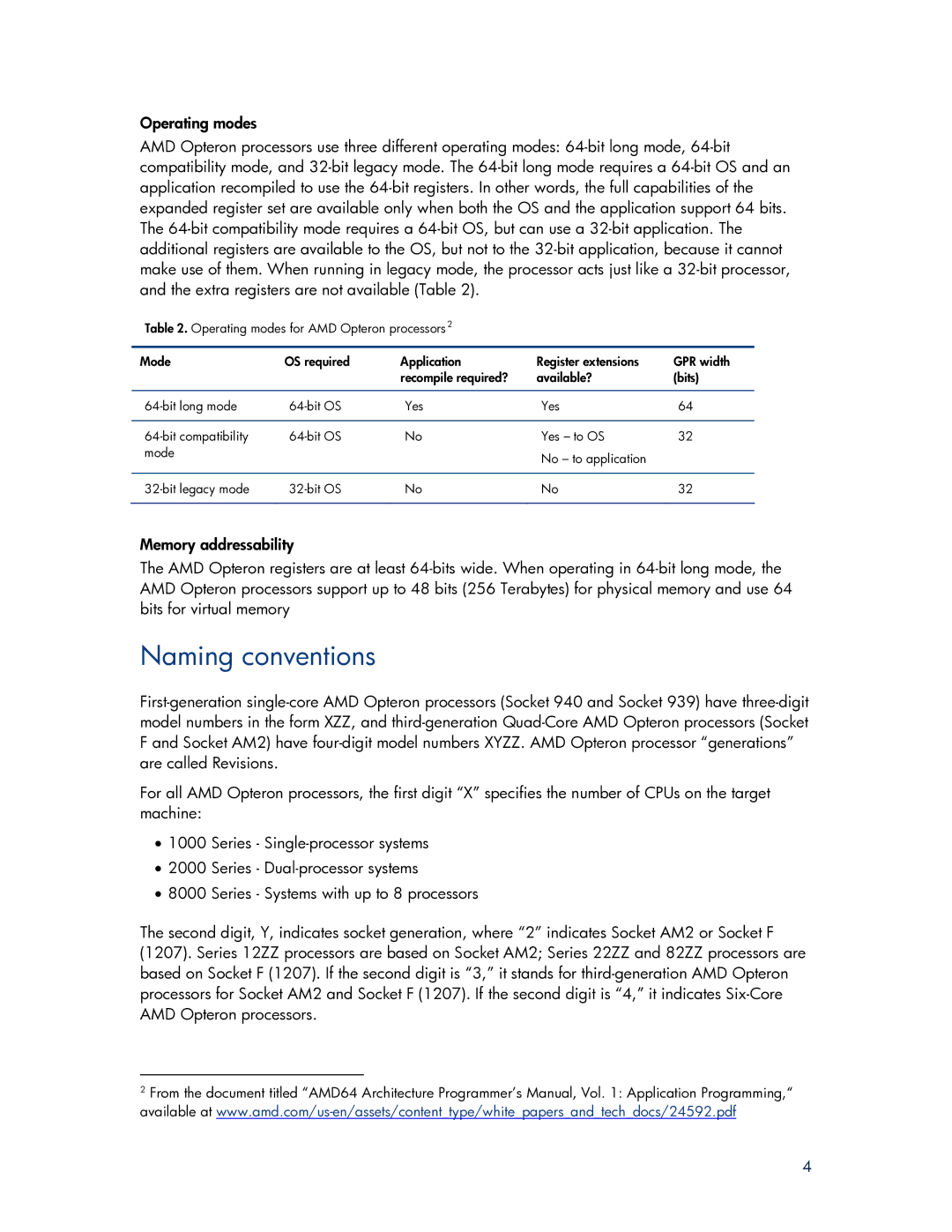Operating modes
AMD Opteron processors use three different operating modes: 64-bit long mode, 64-bit compatibility mode, and 32-bit legacy mode. The 64-bit long mode requires a 64-bit OS and an application recompiled to use the 64-bit registers. In other words, the full capabilities of the expanded register set are available only when both the OS and the application support 64 bits. The 64-bit compatibility mode requires a 64-bit OS, but can use a 32-bit application. The additional registers are available to the OS, but not to the 32-bit application, because it cannot make use of them. When running in legacy mode, the processor acts just like a 32-bit processor, and the extra registers are not available (Table 2).
Table 2. Operating modes for AMD Opteron processors2
Mode | OS required | Application | Register extensions | GPR width |
| | recompile required? | available? | (bits) |
| | | | |
64-bit long mode | 64-bit OS | Yes | Yes | 64 |
| | | | |
64-bit compatibility | 64-bit OS | No | Yes – to OS | 32 |
mode | | | No – to application | |
| | | |
| | | | |
32-bit legacy mode | 32-bit OS | No | No | 32 |
| | | | |
Memory addressability
The AMD Opteron registers are at least 64-bits wide. When operating in 64-bit long mode, the AMD Opteron processors support up to 48 bits (256 Terabytes) for physical memory and use 64 bits for virtual memory
Naming conventions
First-generation single-core AMD Opteron processors (Socket 940 and Socket 939) have three-digit model numbers in the form XZZ, and third-generation Quad-Core AMD Opteron processors (Socket F and Socket AM2) have four-digit model numbers XYZZ. AMD Opteron processor “generations” are called Revisions.
For all AMD Opteron processors, the first digit “X” specifies the number of CPUs on the target machine:
•1000 Series - Single-processor systems
•2000 Series - Dual-processor systems
•8000 Series - Systems with up to 8 processors
The second digit, Y, indicates socket generation, where “2” indicates Socket AM2 or Socket F (1207). Series 12ZZ processors are based on Socket AM2; Series 22ZZ and 82ZZ processors are based on Socket F (1207). If the second digit is “3,” it stands for third-generation AMD Opteron processors for Socket AM2 and Socket F (1207). If the second digit is “4,” it indicates Six-Core AMD Opteron processors.
2From the document titled “AMD64 Architecture Programmer’s Manual, Vol. 1: Application Programming,“ available at www.amd.com/us-en/assets/content_type/white_papers_and_tech_docs/24592.pdf
4

